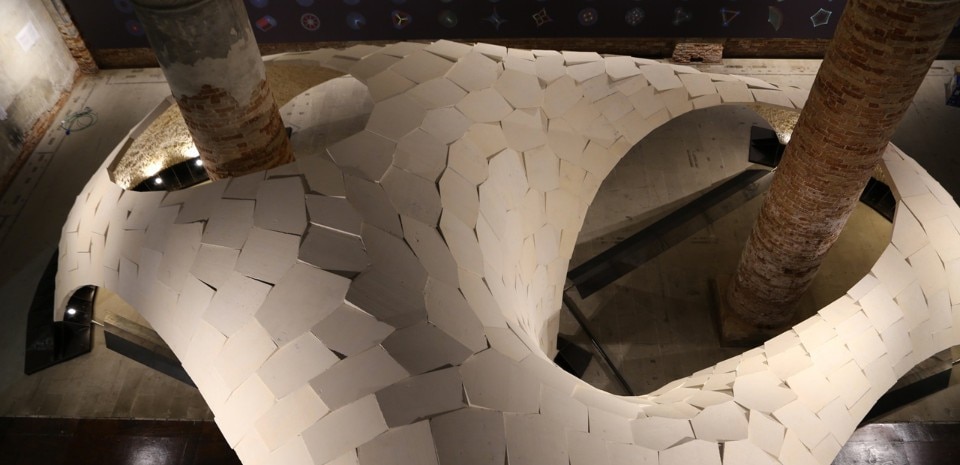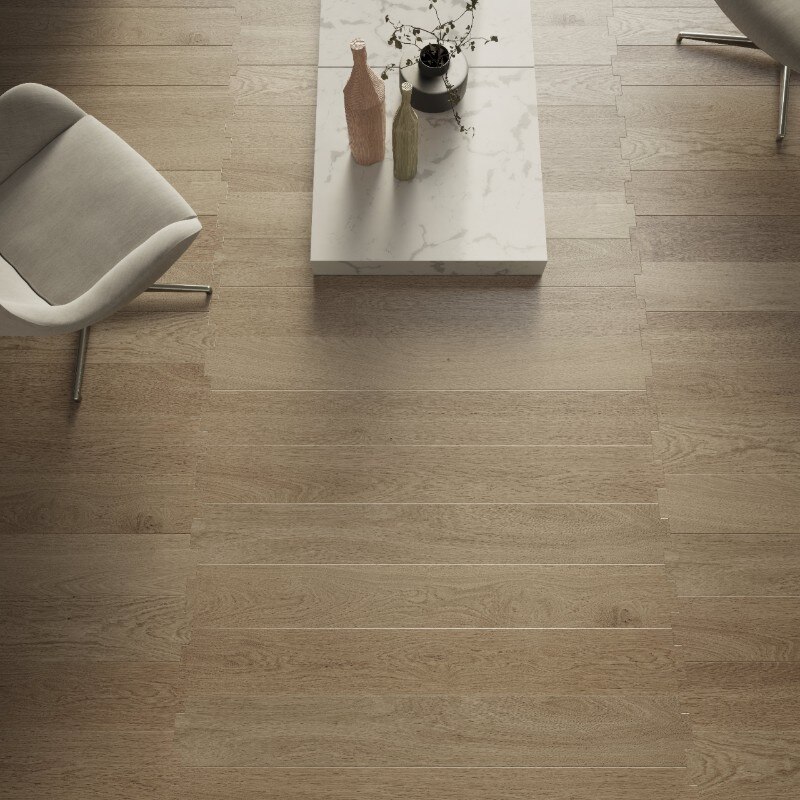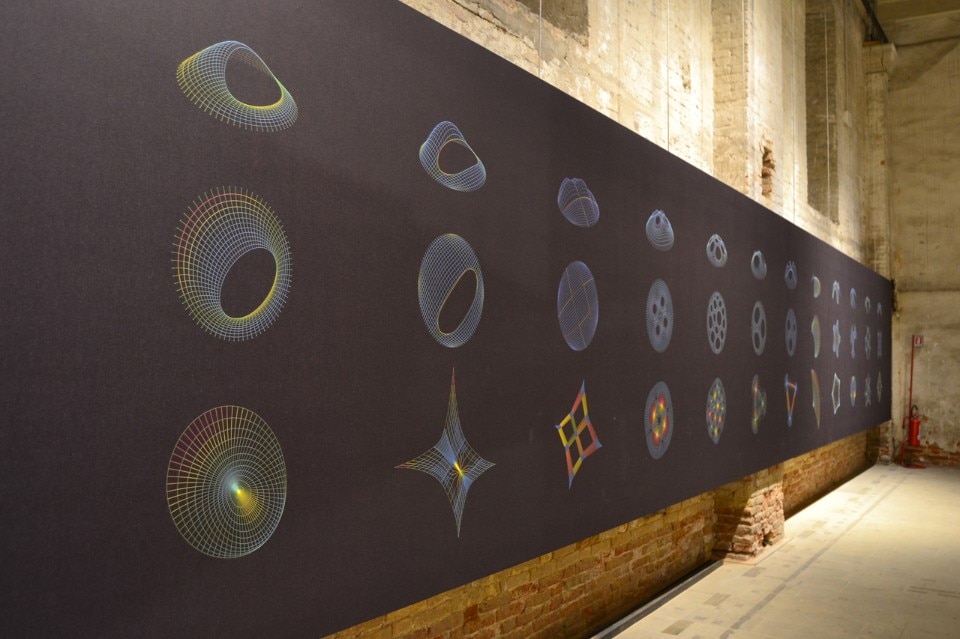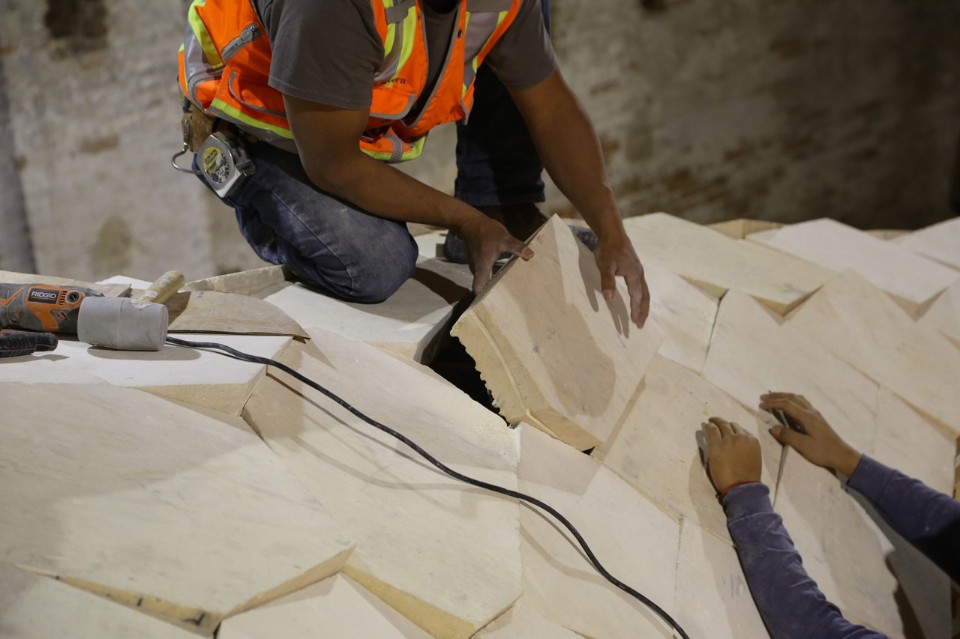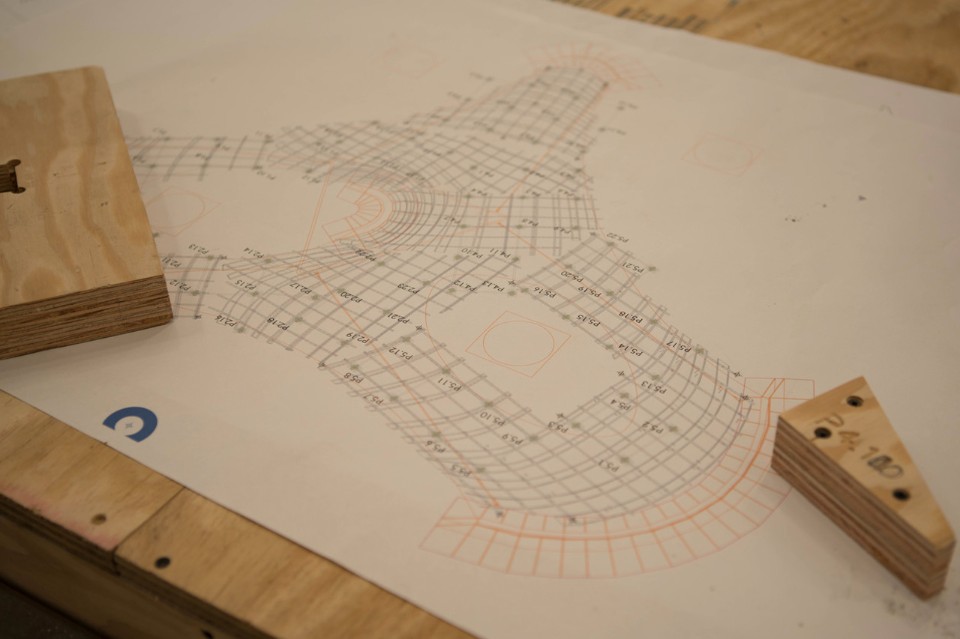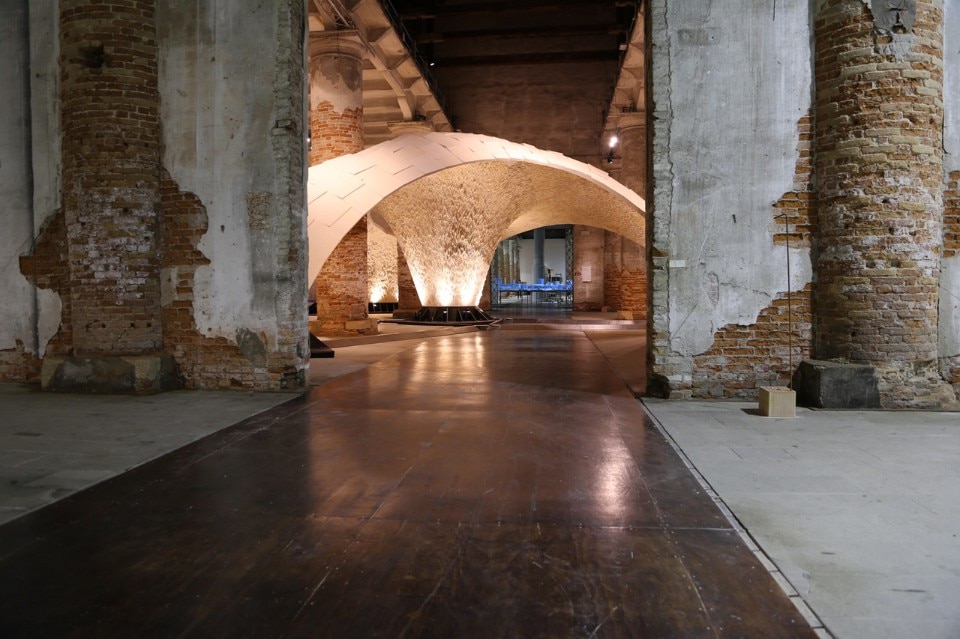
At the Arsenale, the installation of the sprawling Armadillo Vault conceived by Block Research Group of the Swiss Federal Institute of Technology in Zurich is part of the exhibition “Beyond Bending”. The vault illustrates how technological solutions and the study of expressive forms can reinterpret the principles of historic structures such as those of the King’s College Chapel in Cambridge and the vaulting designed by the Spanish architect Rafael Guastavino.
By changing principles from the past with new technology and fabrication techniques, the installation shows the logic behind forms held together by compression only. It offers new possibilities to progress beyond framed wooden floors, reinforced concrete floors, cupolas, free forms and beyond flexure.
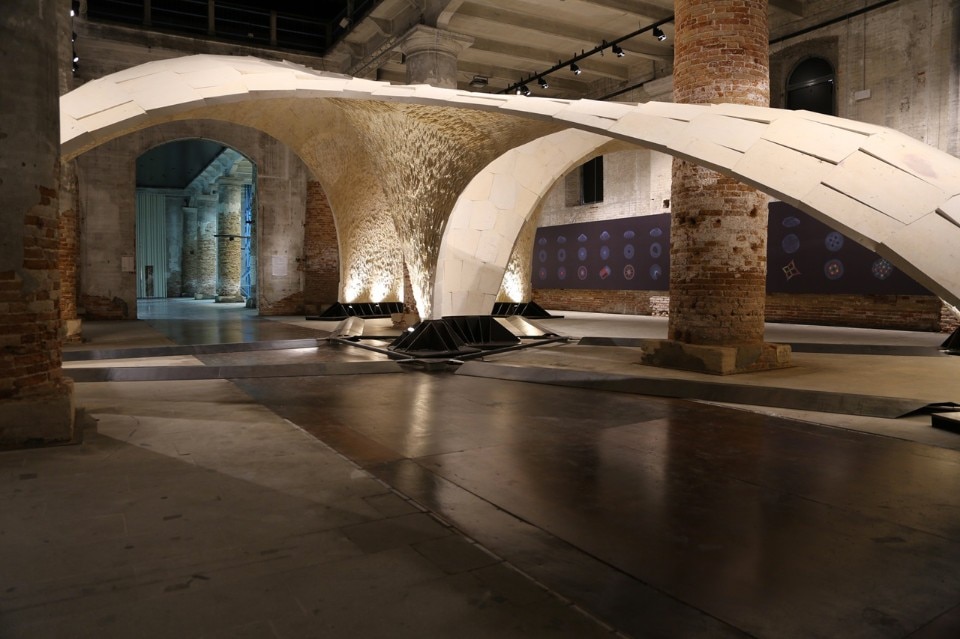
The vault is made of 399 individual limestone voussoirs, assembled without mortar or structural connections. The forces of compression are transferred along the full surface, reducing the amount of material used, and thus reducing the total weight of the structure, its cost and building time. It demonstrates a new use of materials typical of traditional architecture.
The project is a clear example of how scientific progress and innovation can be triggered by collaboration between different specialised trades. It is the result of interdisciplinary work born from the cooperation between engineers, designers and qualified masons.
Modelled, fabricated and built in five months, the vault is based on ten years of research conducted by Block Research Group (BRG) on complex geometry. For years, the group has been working on different the key factors contained in the project, such as structural analysis, parametric design methods, the assembly of discrete elements, and digital fabrication technology.
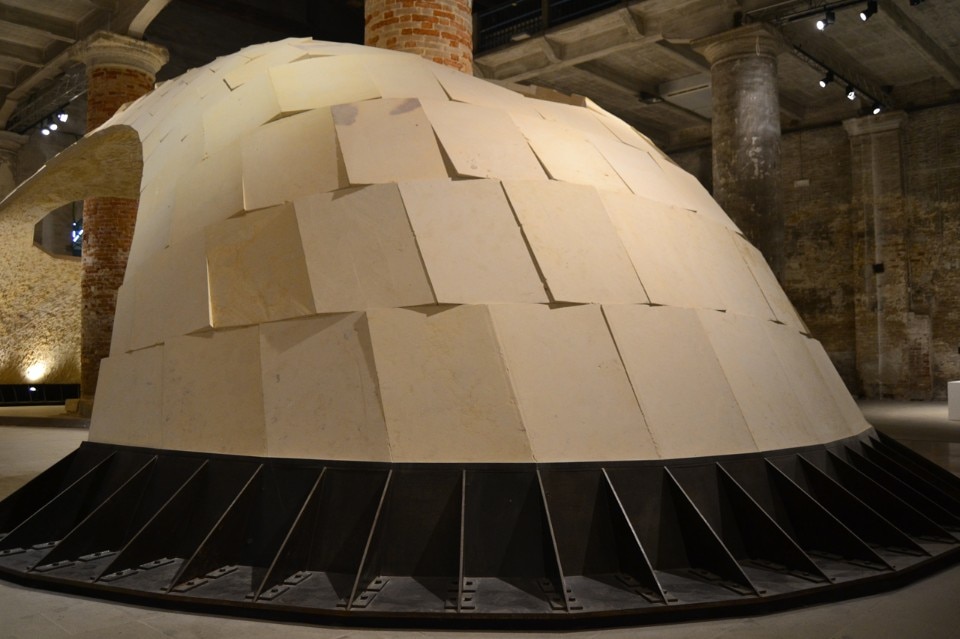
BRG combines a digital concept process with the study of traditional techniques and methods of architecture from the past. It experiments with possible solutions for the building of vaults. This allows the group to renew its knowledge of historical buildings and use current technology in its search for new shapes and technological solutions. The group develops innovative instruments for architectural design.
The novel component of the project resides more in the process than in the technique. The funicular shape of the vault is the result of a form-finding process based on thrust network analysis, a digital design method that optimises stability. Its potential lies in the possibility to verify stability by means of a digital model with three-dimensional surfaces. It also analyses the gravitational component acting upon the surfaces.
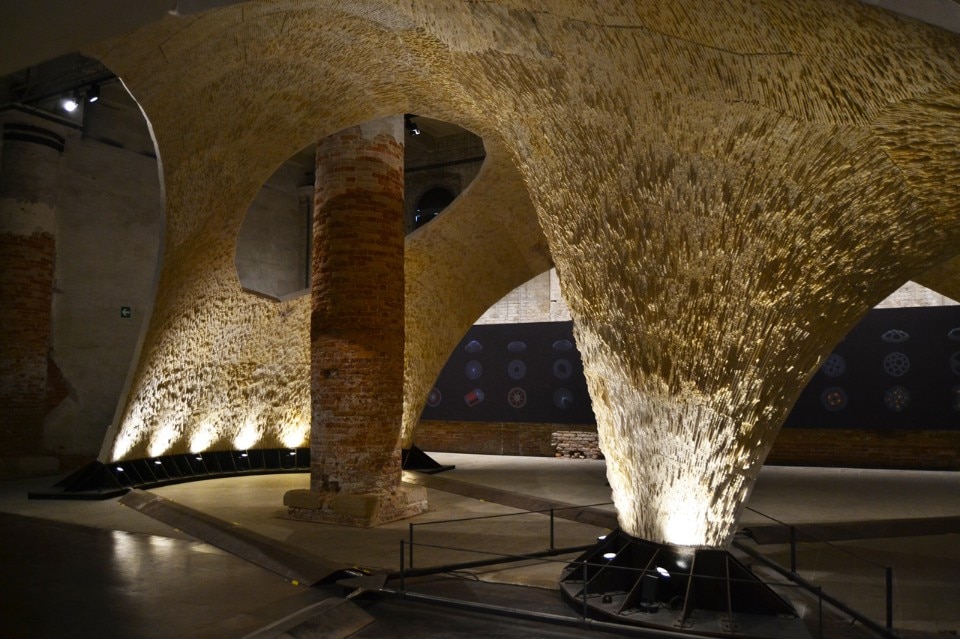
The limestone voussoirs were made using digital fabrication methods that allowed the model to be constructed systematically, and allowed the composition to be defined in its characteristics and logic. This has erased the difference between representation and artefact.
The Armadillo Vault installation shows how the union between knowledge of the past and current technology are orienting architecture toward an informed approach in order to guarantee the highest possible performance in energy use, structure, aesthetics and cultural input. It is a preview of new paradigms in construction techniques.
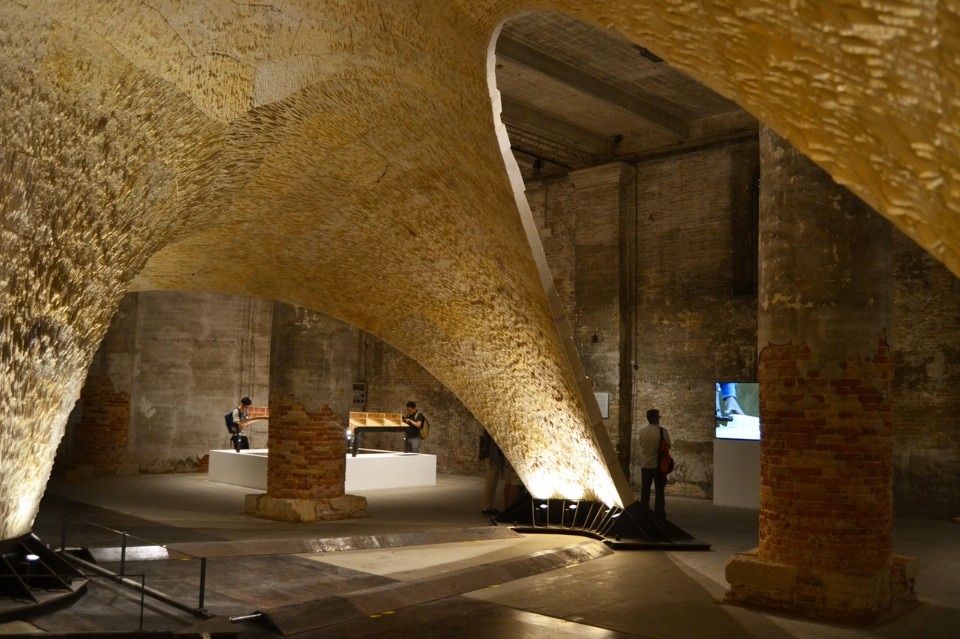
Armadillo Vault
Concept: Philippe Block, John Ochsendorf and David Escobedo
Structural design and architectural geometry: Block Research Group, ETH Zurich – Philippe Block, Tom Van Mele, Matthias Rippmann, Edyta Augustynowicz, Cristián Calvo Barentin, Tomás Méndez Echenagucia, Mariana Popescu, Andrew Liew, Anna Maragkoudaki, Ursula Frick, Robin Oval, Nick Krouwel, Noelle Paulson
Structural engineering: Ochsendorf DeJong & Block – John Ochsendorf, Matthew DeJong, Philippe Block, Anjali Mehrotra
Fabrication and construction
The Escobedo Group: David Escobedo, Matthew Escobedo, Salvador Crisanto, John Curry, Francisco Tovar Yebra, Joyce I-Chin Chen, Adam Bath, Hector Betancourt, Luis Rivera, Antonio Rivera, Carlos Rivera, Carlos Zuniga Rivera, Samuel Rivera, Jairo Rivera, Humberto Rivera, Jesus Rosales, Dario Rivera
Lighting: Lichtkompetenz, Artemide
Sponsors: Kathy and David Escobedo (owners), ETH Zurich, Department of Architecture, MIT, School of Architecture + Planning, NCCR Digital Fabrication, Pro Helvetia, Artemide
Limestone quarry blocks: Purchased from TexaStone Quarries
Year: 2016

Innovation and timeless elegance
Han by Martex is a modular executive system that blends functionality with premium materials. A contemporary classic, designed for evolving executive spaces for over 25 years.



